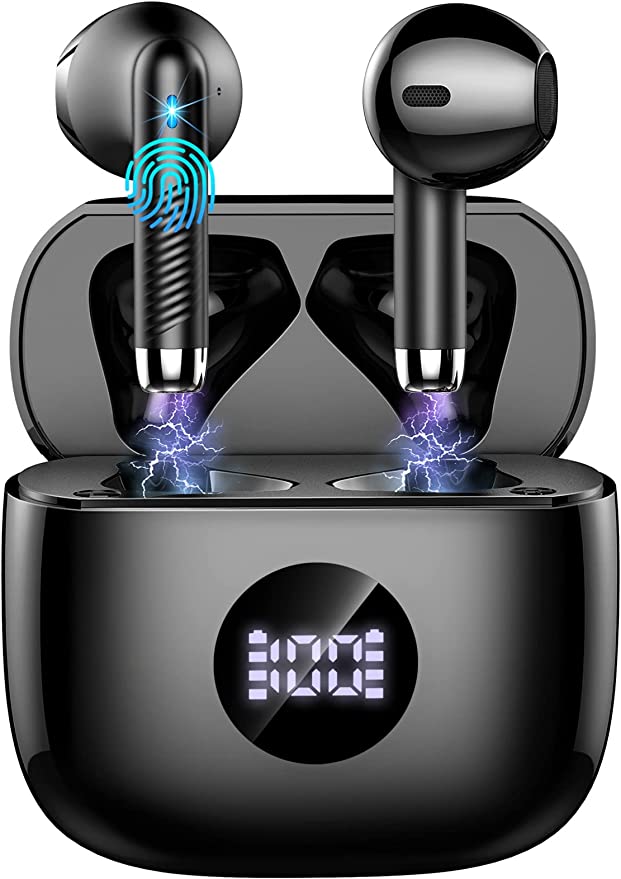Polk Audio MagniFi Max AX: Immersive Dolby Atmos & DTS:X Sound for Your Home
Update on March 15, 2025, 6:29 a.m.
Have you ever watched a movie at home and felt like something was missing? The picture might be stunning, but the sound… well, it just doesn’t quite transport you into the scene. For years, we’ve accepted the limitations of traditional stereo and even basic surround sound. But what if your living room could truly become a cinematic soundscape? That’s the promise of immersive audio, and it’s more accessible than you might think, thanks to technologies like those found in the Polk MagniFi Max AX soundbar.

The Quest for Better Sound: A Journey from Mono to Immersive
Our journey to truly realistic sound reproduction has been a long one. From the single-channel limitations of early mono recordings, we progressed to stereo, which provided a sense of width by separating sounds between left and right speakers. Surround sound, with its 5.1 or 7.1 configurations, added more channels, enveloping the listener in a more complete sound field. But even traditional surround sound has its limitations. It’s channel-based, meaning sounds are assigned to specific speakers. This creates a sense of surround, but it doesn’t quite replicate how we hear sound in the real world.
Sound Basics: What Exactly Is Sound, Anyway?
Before we dive into the complexities of immersive audio, let’s touch on the fundamentals. Sound is, at its core, vibration. When an object vibrates, it creates pressure waves that travel through the air (or another medium) to our ears. Our eardrums pick up these vibrations, and our brains interpret them as sound. The frequency of the vibration determines the pitch (how high or low the sound is), and the amplitude determines the volume (how loud it is).
The human ear, in its prime, is a fantastic sound. The range is 20Hz to 20kHz.
The human ear is incredibly sensitive, capable of detecting a vast range of frequencies and amplitudes. But our perception of sound goes beyond just frequency and amplitude. We also perceive the direction and distance of a sound source, thanks to a complex interplay of factors, including the shape of our ears, the time it takes for sound to reach each ear (interaural time difference), and the difference in sound level between our ears (interaural level difference).

The Evolution of Surround: From 5.1 to Object-Based Audio
Traditional surround sound systems, like 5.1 setups (five speakers and one subwoofer), create a sense of immersion by placing speakers around the listener. However, these systems are limited by their channel-based approach. Imagine a bird flying across the screen: in a 5.1 system, the sound would transition from one speaker to another, but it wouldn’t truly feel like it was moving smoothly through space.
This is where object-based audio comes in. Formats like Dolby Atmos and DTS:X revolutionize sound reproduction by treating sounds as individual “objects” rather than assigning them to fixed channels. Each object has associated metadata that describes its position in a three-dimensional space, including its height.
Dolby Atmos and DTS:X: Sound from Every Direction
Dolby Atmos and DTS:X are the leading immersive audio formats. They both utilize object-based audio, but they differ slightly in their implementation. Dolby Atmos, for instance, relies on a system of up to 128 individual audio objects, with metadata that dictates their precise location in 3D space. This location data is then used by a compatible receiver or soundbar to render the sound in real-time, taking into account the specific speaker configuration in your room.
DTS:X is similarly object-based but offers more flexibility in speaker placement. It doesn’t require specific speaker configurations, adapting to the speakers you have available. This makes it potentially easier to implement in various home theater setups. However, both formats achieve the same fundamental goal: to create a truly three-dimensional sound field that envelops the listener.
Height Matters: How Up-Firing Drivers Work
A key component of creating a truly immersive soundscape is the addition of height channels. These channels provide sounds that appear to come from above, adding a crucial dimension to the audio experience. Think of the roar of a jet engine passing overhead, or the gentle patter of rain falling on a roof. These sounds, realistically, originate above us.
Soundbars like the Polk MagniFi Max AX achieve height effects through the use of up-firing drivers. These drivers are angled upwards, bouncing sound off the ceiling. Your ears and brain then interpret these reflected sounds as originating from above, creating the illusion of height. The effectiveness of this technique depends on the ceiling’s height and reflectivity, but in most typical living rooms, it works remarkably well.
Polk MagniFi Max AX: Bringing the Cinema Home
The Polk MagniFi Max AX is a 5.1.2 channel soundbar, meaning it features five traditional surround channels (left, center, right, and two surround speakers), one subwoofer channel (for low-frequency effects), and two height channels. The “point two” (.2) signifies the two up-firing drivers that create the overhead sound effects.
Beyond its Dolby Atmos and DTS:X capabilities, the MagniFi Max AX incorporates several other key technologies to enhance the listening experience. These include an 11-driver array, a powerful 10-inch wireless subwoofer, and two of Polk’s patented technologies: SDA (Stereo Dimensional Array) and VoiceAdjust.
SDA Technology: Widening the Soundstage, Naturally
One of the challenges with soundbars is creating a wide soundstage that extends beyond the physical width of the unit itself. Traditional stereo soundbars can sometimes sound “narrow,” with all the sounds appearing to originate from a small area in front of the listener. Polk’s SDA technology addresses this issue.
SDA works by minimizing interaural crosstalk. As we discussed earlier, this is the phenomenon where sound intended for one ear reaches the other ear. This crosstalk blurs the stereo image and makes the soundstage appear smaller. SDA uses a combination of carefully designed driver placement and signal processing to cancel out this unwanted crosstalk. The result is a wider, more immersive soundstage that feels more natural and expansive. It’s like the soundbar “disappears,” and you’re left with a sound field that extends far beyond its physical boundaries.

VoiceAdjust: Hear Every Word, Clearly
Another common complaint with TV and movie audio is that dialogue can sometimes be difficult to understand, especially during action sequences or when background music is loud. Polk’s VoiceAdjust technology tackles this problem head-on.
VoiceAdjust allows you to specifically adjust the volume of the center channel, where most dialogue is mixed, without affecting the overall volume of the soundtrack. This is achieved through sophisticated digital signal processing (DSP) that isolates and enhances the frequencies associated with human speech. The result is crystal-clear dialogue that cuts through even the most complex sound mixes. You can increase or decrease the level of the center channel, making whispers intelligible and ensuring that crucial plot points aren’t lost in a flurry of explosions or soaring musical scores. It’s a remarkably effective feature, particularly for those who find themselves constantly adjusting the volume to catch dialogue.
Setting the Stage: Soundbar Placement and Room Acoustics
While the MagniFi Max AX incorporates advanced technologies to optimize sound, the physical environment in which it’s placed also plays a crucial role. Proper soundbar placement and consideration of room acoustics can significantly enhance the listening experience.
Ideally, the soundbar should be placed directly below your TV, centered horizontally. The height should be as close to ear level as possible when you’re seated in your primary viewing position. The wireless subwoofer can be placed almost anywhere in the room, although placing it along the same wall as the soundbar, and potentially in a corner, can often enhance its performance. Experimentation is key, as every room is different.
Room acoustics also matter. Hard, reflective surfaces (like bare walls and floors) can cause sound to bounce around, creating echoes and muddying the audio. Soft, absorbent materials (like carpets, curtains, and upholstered furniture) can help to absorb these reflections, resulting in a cleaner, more focused sound. While you don’t need to turn your living room into a recording studio, adding a few strategically placed soft furnishings can make a noticeable difference. For the up-firing drivers to work effectively, a flat, reflective ceiling is ideal. Vaulted or textured ceilings can diffuse the sound, reducing the impact of the height channels.
The Future of Sound: What’s Next for Immersive Audio?
Immersive audio represents a significant step forward in home entertainment, and the technology continues to evolve. We can expect to see further refinements in DSP algorithms, allowing for even more precise and realistic sound placement. There’s also potential for greater integration with smart home ecosystems, allowing for personalized audio profiles and automated room calibration.
Another area of development is the potential for more height channels. While 5.1.2 is a common configuration, systems with four or even more height channels are becoming available, further enhancing the sense of three-dimensional sound. And, as wireless technology continues to improve, we may see even more seamless and reliable wireless connections between soundbars, subwoofers, and surround speakers.
The Polk MagniFi Max AX, with its support for Dolby Atmos, DTS:X, and its proprietary SDA and VoiceAdjust technologies, represents a significant step towards bringing a truly cinematic audio experience into the home. It demonstrates that you don’t need a complex, multi-speaker setup to enjoy immersive sound. By understanding the science behind these technologies, you can appreciate the engineering marvel that is a modern soundbar and, more importantly, enjoy your movies, music, and games in a whole new way. The pursuit of perfect sound reproduction is a continuous journey, but with advancements like these, we’re getting closer than ever before. The ability to not just hear sound, but to feel it all around you, is no longer a futuristic dream – it’s a readily available reality.


























































